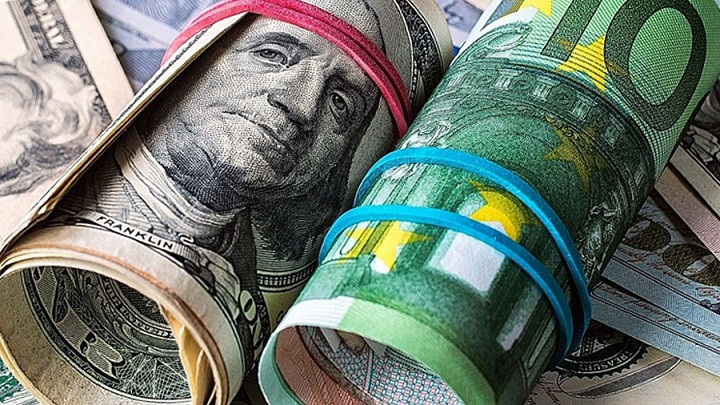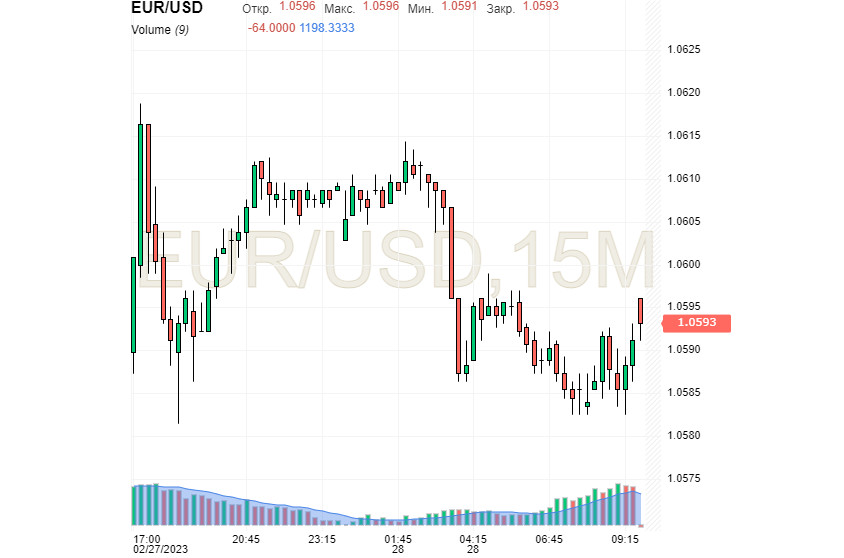
The euro lost its previous momentum, once again yielding to the U.S.. The latter took advantage of the situation and has grown a bit, but experts don't think this is a victory. As a result, the dollar is in limbo, although it has a good chance to outperform the euro.
At the beginning of this week, the greenback strengthened noticeably against the background of the next round of inflation. Later it retreated from its high positions, but managed to outrun the euro at a short distance. Positive macro data from the U.S., especially inflation reports, contributed to the greenback's moderate growth.
Investors are now waiting for the next portion of U.S. macro data. The market is focused on the U.S. Conference Board consumer confidence index. According to preliminary estimates, the index rose to 108.5 points in February from the previous 107.1 points registered in January.
The current situation gives the U.S. currency a chance to outperform the European one, which looks deprived of its key pivot. The greenback gained nearly 3% against the euro in the last month of winter. According to analysts, in the coming weeks, the key market trends for the EUR/USD pair will favor the euro. Many currency strategists note that the market quotes a 50 bps rate hike from the European Central Bank over the next six months. This is more than the Federal Reserve proposed (25 bps hike) but the situation may change at any time. Experts and market participants expect that in the near future, the leading central bank's actions which are aimed at the increase of the rates will help the euro rise.
According to the technical chart, EUR/USD is now in a bearish mood. Analysts estimate that this trend will continue in the short term. Early this week, the pair stabilized near 1.0550 after a pullback to the January low of 1.0532. On the morning of Tuesday, February 28, EUR/USD was trading at 1.0593, trying to overcome the pull of the downward spiral.

Experts predict that if in the short term, the pair settles above 1.0590 and corrects towards 1.0600 (20-period moving average), then it can rise even further. Overcoming the psychologically important level of 1.600 will help it reach the next high, namely 1.0640 (50-period SMA).
According to analysts, the dollar will face difficulties in the growth process at the end of this year. It will become more difficult for the U.S. currency to maintain a high level. Economists at Scotiabank estimate that the greenback will receive support during moderate declines, but it will have difficulty staying in an uptrend in the next few weeks. The USD could be disoriented in the short term, but over the long haul it has a good chance of winning, analysts believe.
The dollar's decline in the last 13 years was the most significant during the final months of 2022 and at the very beginning of 2023. According to experts, the dollar has fallen by 8.8% from November 2022 to February 2023. The January report on U.S. employment, which demonstrated the current unemployment rate at 3.4%, added more oil to the fire. Experts stress, this is the lowest indicator for the last 70 years. Against this background, market participants expect the Fed to further tighten monetary policy. At the beginning of 2023, traders and investors were more optimistic, expecting the central bank to complete the rate hike cycle. However, current U.S. macro data, including unexpectedly strong employment data, confused both the Fed and market participants.
The employment data was followed by other reports showing a sustained increase in inflation in the United States. However, despite some imbalances, the U.S. economy remains resilient. At the same time, the current economic macro data forced traders and investors to acknowledge the fact that Fed officials were right. They have repeatedly stated the need to continue to raise rates. In addition, the Fed admits that rates will have to be left high for some time in order to control inflation.
Recall that the Fed rate hike cycle began last year. At the moment, market participants are watching the pace of its increase, assessing the possible timing of monetary policy easing. The key rate was raised by 25 bps in the last month of winter. Earlier, in November 2022, it was increased by 75 bps, and in December by another 50 bps and this is not the limit.
The current situation is slightly undermining the greenback, which is still trying to gain a foothold. Wells Fargo currency strategists believe the dollar will stabilize in the first quarter of 2023. However, in the long term, USD will depreciate, experts warn. Wells Fargo says that the period of depreciation of the greenback will be long. The reason is the multidirectional nature of the Fed's monetary policy fundamentals, which "will become less favorable to the dollar over time."
The sustainability of economic growth in the U.S. and the hawkish policy of the Fed will weaken in the first half of this year, experts believe. On this background, the sustainability of the greenback will be in question. Wells Fargo expects the dollar's decline to be gradual and the peak of decline will be at the end of 2023. As a result, the depreciation of the dollar reported earlier will gain momentum in 2024, when the central bank will begin to aggressively reduce interest rates. This measure, which many analysts consider premature, will destabilize the Fed.





















